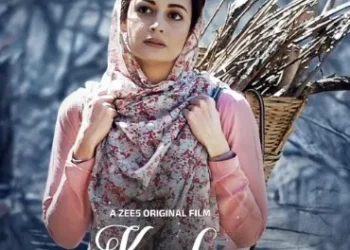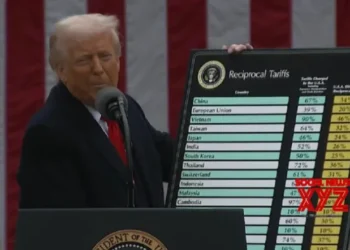Amidst leading luminaries of industries spanning across the business of luxury, the Atlas of Affluence (AOA) 2022, created by The Voice of Fashion (TVOF, the daily digital magazine that tracks and leads conversations on Indian fashion, design, crafts and retail and a division of Reliance Brands, was launched here on Friday.
It is the first such white paper from India that dissects consumer behaviour studied through the prism of luxury and a collective reflection on what affluence means in India during the two years of the pandemic.
Charting the post-pandemic market and the clearly altered consumer mindset through a specially commissioned study across six cities and markets of India, AOA 2022 has been published as a book with exclusively commissioned artworks.
The study used the time graph of “pre-pandemic” and “post-pandemic” months to specify a comparative matrix.
It also helps debunk long-held ideas about what affluence and luxury have meant to Indians.
The study was formulated over the last several months through scientifically-designed consumer research to understand metro and non-metro differences among buyers, brands, and behavioural ideas behind consumption.
The other sections of this white paper move beyond luxury as a product to explore granularities of affluence.
“In finance and business studies affluence is about assets compared to liabilities. But for an evolved luxury market – which includes aesthetic finesse, awareness, aspiration, affordability and distinction as well as trend-defining choices – affluence brings a new set of affirmations. It is a combination of wealth, assets and high disposable incomes, with socio-cultural awareness, self-knowledge, and a response-able outlook. This comes out clearly in this white paper as the rise of the individual,” said Shefalee Vasudev, Editor, The Voice of Fashion.
Beyond business strategy and numbers, there are a series of columns, interviews, ground reports and features stories on architecture, personal style, the ascendance of India in South Asian design and global luxury, the emergence of the gold collar consumer and the growing market for beauty and wellness.
Also, the study is a consortium, a melting pot of topical, relevant, ready-to-use creative, and commercial insights.
An RBL spokesperson said: “Reliance Brands is happy to support the creation of the Atlas of Affluence, which will become the definitive document for understanding the luxury market in India not just for businesses already operating in this sector but for global businesses looking to invest in the India story. This is the largest exercise ever to decode the affluent consumer across various consumption categories and this will build our own strategic views as we continue to expand in the luxury sector.”
Following are some key takeaways of AOA 2022 at a glance:
57 per cent men claim that their fashion spend has increased. As per the RBL data, men's brand portfolio saw 46 per cent growth in 2021 compared to 2019. For women, it was 14 per cent.
-- 76 per cent invest in luxury brands that depict their sense of style over 26 per cent who still see luxury as a means of social assertion.
-- 65 per cent of non-metro residents buy luxury on a regular basis against 53 per cent in metros.
-- 2 out of 3 among the affluent had shopped luxury online for the first time during Covid-19 restrictions.
-- 65 per cent of those shopping online mention that they are eagerly waiting for stores to open.
-- 26 per cent Gen Z spontaneously associate luxury with travel and hospitality followed by 21 per cent who associate luxury with fashion and apparel.
-- 52 per cent respondents keep celebrity endorsements and influencers in top 2 ranks for key drivers behind brand affinity.
-- 58 per cent agree that they have spent more on tech products to curate a futuristic entertainment experience while being stuck at home.






















